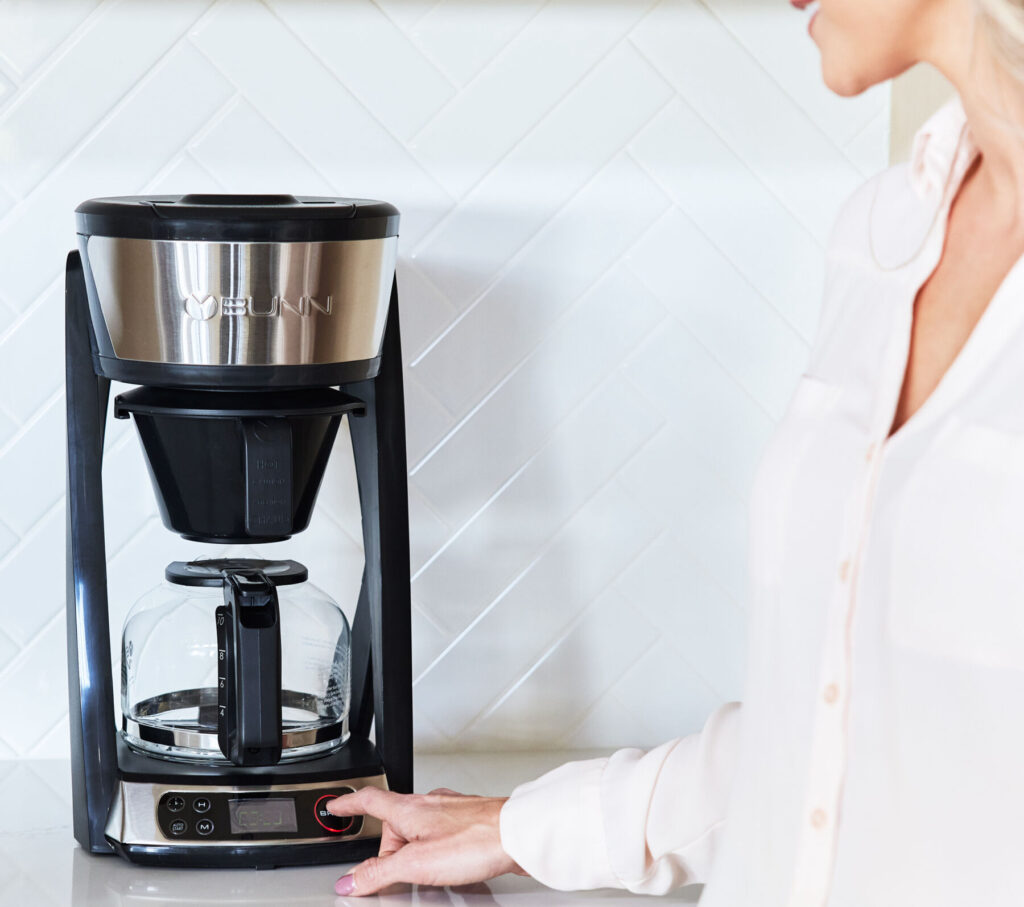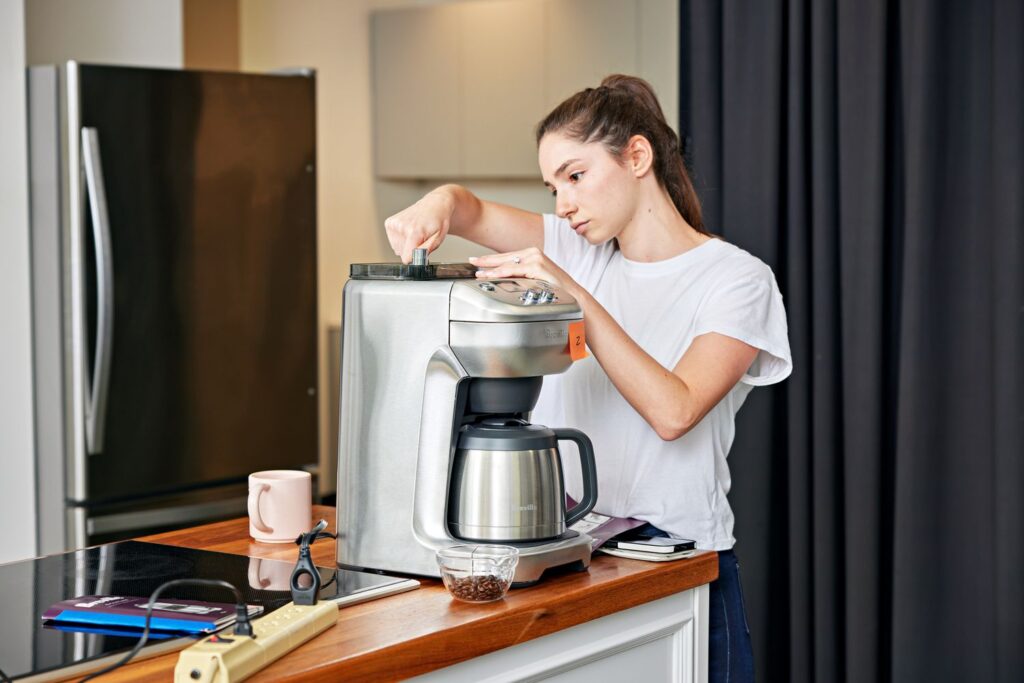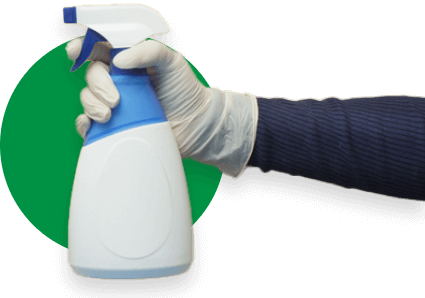As a business owner, you know that a great cup of coffee can make all the difference in customer satisfaction. With over 54% of Americans over 18 drinking at least one cup every day, the quality and roast color of your coffee and espresso beans can mean the difference between a great cup of coffee and a disappointment for your customers. However, to consistently brew delicious coffee, regular cleaning, and maintenance of your commercial coffee maker are essential. In this article, we’ll guide you through the proper and safe way to deep clean your Bunn coffee maker for optimal performance and longevity.
Why Regular Cleaning Matters for Faster, Great-Tasting Coffee
Commercial Bunn coffee makers are designed for higher volume production, allowing cafes to brew large quantities of coffee quickly and consistently to meet customer demand. However, mineral buildup and insufficient cleaning can lead to slower brewing cycles, potential breakdowns, and subpar coffee flavor, negatively impacting your business operations.
Bunn is one of the most trusted brands for serving coffee in commercial environments. The ubiquitous use of Bunn commercial coffee machines by hotels, restaurants, and other food service establishments attests to their excellence. To keep your Bunn coffee maker running at its best and provide those hot, delicious drinks in seconds, routine cleaning and maintenance are required.
The biggest problem for a Bunn machine is the scale build-up and corrosion created by mineral deposits in the water. Softer water will leave less deposits, while harder water will leave more. It’s important to ascertain the water hardness level in your area so you can adjust your cleaning schedule as needed.
If you don’t keep your machine clean, several issues can arise:
- Your coffee will start tasting bitter and stale.
- Your machine can start accumulating bacteria and mold, creating a safety hazard.
- It will take longer to brew a pot of coffee. The water might sputter and steam while brewing.
- You will need to spend money on replacement parts and service technicians.
- Your machine’s overall lifespan will noticeably decrease.
Considering that a commercial Bunn coffee brewer can cost more than $10,000, it makes sense to optimize the longevity and quality of your investment through regular cleaning.

Seven-Step Cleaning Process for Bunn Coffee Makers
Cleaning your Bunn coffee maker is crucial for maintaining the machine’s optimal performance and the quality of coffee produced. Follow these steps to clean your Bunn machine deep:
1. Remove Remaining Coffee Grounds
If you’ve just finished brewing a pot of coffee, remove the old filter, and dump out the coffee grounds first. Give the brew funnel a light rinse, then place it back into your Bunn coffee maker. Do the same to the coffee pot to remove any remaining brew.
2. Place A New Filter to Catch Mineral Deposits
Please place a new filter into the brew funnel, but don’t put any coffee grounds in it. The filter will catch any large mineral deposits and debris from the cleaning process, and it is helpful to have a filter to prevent your brew funnel from clogging up.
3. Clean External Surfaces with Sanitizing Wipes
For sanitizing displays and contact surfaces like handles or switches, use commercially available sanitizing wipes with bleach (like Clorox wipes) or bleach cleaning sprays with < 10% bleach. If using a spray, do not spray directly on equipment. Spray sanitizer onto a clean microfiber cloth, then wipe surfaces. This type of cloth will prevent unwanted scratches. You can run a dry microfiber cloth over the machine for extra polish.
Dallas Janitorial Services specializes in commercial cleaning and can assist with professionally sanitizing the external surfaces of your Bunn coffee maker. Their trained team has the expertise to clean your machine thoroughly and safely.
4. Fill the Machine’s Water Reservoir with Descaling Solution
A DIY descaling solution works to clean your entire Bunn coffee maker from the inside. An acidic solution will remove the mineral deposits and grime build up from the water pipes, and clean the basket, spray head, and coffee pot at the same time.
Fill the water reservoir with equal parts water and white vinegar or lemon juice, and 2-3 teaspoons of baking soda. The vinegar will kill mold and dissolve hardened mineral buildup, while baking soda will act as a scrubber to clean the inside of your coffee maker.
5. Insert Deliming Spring and Clean Sprayhead Tube
Your Bunn commercial coffee maker comes with a deliming spring. While the spray head is removed, insert the deliming spring into the spray head tube until approximately two inches of the spring remain visible. Saw the spring back and forth while twisting it five or six times to loosen any lime deposits.
Flush the spray head tube by running a brew cycle with an empty brew funnel and decanter. Once the brew cycle finishes, wipe the spray head panel with a clean, soft cloth and replace the spray head by screwing it onto the spray head fitting.
If mineral deposits build up on the spray head, this will restrict water flow and negatively impact brewing. For a consistent taste and quality of coffee, clean the spray head daily. Unscrew the spray head from its holder. Rinse it thoroughly, and use the cleaning tool that comes with the machine to make sure each hole is open and clean from mineral deposits.
Insert the short end of the cleaning tool into each water outlet. Make sure to remove even residual film along with the mineral deposits. Rinse again after opening each hole.
6. Run and Finish with Brewing and Rinsing Cycles
Run a brewing cycle to funnel the descaling solution through the coffee machine. Let the coffee maker run until the water tank is completely empty, draining the coffee pot as it fills up with liquid. You may notice particles in the coffee pot as the water passes through the spray head, which is normal since the cleaning solution filters out grime from inside your coffee maker.
Fill up the water tank with plain water, and run a couple of rinse cycles. This will remove any remaining debris in your coffee machine, and get rid of residue from the cleaning solution. You may need to run two or three rinse cycles to get your Bunn coffee maker free from the vinegar solution. Rinse until the water in the coffee pot no longer smells like vinegar.
7. Let the BUNN Coffee Maker Dry Off
Take a soft cloth and wipe the outside of the Bunn coffee maker with warm water. Let the machine dry before storing to prevent mold buildup. Dry your coffee pot clean with a kitchen towel, and do the same to the brew funnel.
Descaling: Preventing Mineral Buildup and Other Deposits
Descaling is the process of removing mineral deposits that have built up to extend the life of your appliance and improve its efficiency. Descaling can also improve the quality of the water coming out of your machine. This is beneficial because no one appreciates tiny pieces of limescale floating around in their freshly brewed cup of coffee.
The acid in the vinegar solution works to loosen and dissolve lime deposits as it circulates through your machine. When done regularly, it helps to prevent performance-killing buildups on the heating elements and tank. Machines with especially heavy-scale deposits may need professional cleaning or service.
How Often Should You Clean Your Coffee Maker?
After every use, when brewing stops, discard the grounds and filter. You can quickly rinse the decanter with warm water or wash it with a mild detergent. Use a soft microfiber cloth to wipe up spilled grounds or splashes of coffee as needed.
For a consistent taste and beverage level, Bunn recommends that most people clean their machines daily. If you test and confirm that the water hardness level in your area is lower than average, you technically can clean your machine every other day (3-4 times per week). However, even in an area with soft water, it doesn’t hurt to clean the machine daily.
Descale your coffee maker every month, and clean the carafe every day. Coffee makers can harbor mold and germs, and mineral deposits over time can slow heating and brewing, which is why it’s recommended to descale and deep-clean your coffee maker once a month.
Use a new filter for each brew cycle. Brewing your coffee with the same filter over and over again will cause your brew to taste stale, and can build up bacteria and mold in your machine. Avoid leaving coffee overnight. Not only will this stain your coffee pots, it will make the coffee go stale, and will attract bacteria. Rinse your filters before using. Keep your Bunn coffee machine dry. Storing your coffee maker while wet increases the chances of mold growth in your machine. Always store your coffee maker dry.

Keep Your Restaurant Brewing with Expert Commercial Cleaning!
Regular cleaning and maintenance of your commercial Bunn coffee maker is essential for brewing great-tasting coffee consistently and efficiently. By following the step-by-step cleaning process outlined in this article, you can prevent mineral buildup, ensure optimal performance, and extend the life of your machine.
Are you tired of subpar coffee and equipment that just doesn’t perform? Let our professional cleaning services revitalize your commercial Bunn coffee maker, ensuring every cup is brewed to perfection. Our experienced team specializes in thorough cleaning techniques tailored specifically for coffee machines, removing buildup and enhancing flavor while extending the life of your equipment. Don’t let a dirty machine compromise your coffee quality! Contact us today to schedule a cleaning and read our glowing customer reviews.

FAQs About How to Clean A Commercial Bunn Coffee Maker
What happens if you don’t keep your machine clean?
If you don’t clean your Bunn coffee maker regularly, your coffee will start tasting bitter and stale. The machine can accumulate bacteria and mold, creating a safety hazard. It will also take longer to brew and may sputter during brewing. You’ll end up spending money on replacement parts and services, and the machine’s lifespan will decrease.
How should I clean a stainless coffee carafe?
To clean a stainless coffee carafe, rinse it with warm water after each use. For a deeper clean, wash it with mild detergent. Avoid abrasive scrubbers that can scratch the surface. Dry thoroughly to prevent water spots and maintain the shine.
What can I use to clean my coffee machine as a substitute for original cleaners?
You can make a DIY descaling solution with equal parts water and white vinegar or lemon juice, plus 2-3 teaspoons of baking soda. This acidic mixture will dissolve mineral deposits and clean the inside of your machine. Always rinse thoroughly afterward.
How much vinegar do you put in a Bunn coffee maker?
For descaling, fill the water reservoir with equal parts water and white vinegar. The general recommendation is to use a 1:1 ratio of water to vinegar. Run a brew cycle with this solution, then rinse the machine by running 2-3 brew cycles with plain water.
How to drain water out of a commercial Bunn coffee maker?
To drain water from your Bunn coffee maker, first, unplug the machine. Place a container under the spray head. Remove the spray head and let the water drain into the container. You can also tilt the machine slightly to drain any remaining water from the tank. Replace the spray head when finished.







